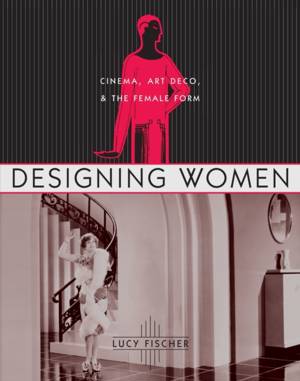
Je cadeautjes zeker op tijd in huis hebben voor de feestdagen? Kom langs in onze winkels en vind het perfecte geschenk!
- Afhalen na 1 uur in een winkel met voorraad
- Gratis thuislevering in België vanaf € 30
- Ruim aanbod met 7 miljoen producten
Je cadeautjes zeker op tijd in huis hebben voor de feestdagen? Kom langs in onze winkels en vind het perfecte geschenk!
- Afhalen na 1 uur in een winkel met voorraad
- Gratis thuislevering in België vanaf € 30
- Ruim aanbod met 7 miljoen producten
Zoeken
Omschrijving
Grand, sensational, and exotic, Art Deco design was above all modern, exemplifying the majesty and boundless potential of a newly industrialized world. From department store window dressings to the illustrations in the Sears, Roebuck & Co. catalogs to the glamorous pages of Vogue and Harper's Bazar, Lucy Fischer documents the ubiquity of Art Deco in mainstream consumerism and its connection to the emergence of the "New Woman" in American society. Fischer argues that Art Deco functioned as a trademark for popular notions of femininity during a time when women were widely considered to be the primary consumers in the average household, and as the tactics of advertisers as well as the content of new magazines such as Good Housekeeping and the Woman's Home Companion increasingly catered to female buyers. While reflecting the growing prestige of the modern woman, Art Deco-inspired consumerism helped shape the image of femininity that would dominate the American imagination for decades to come.
Specificaties
Betrokkenen
- Auteur(s):
- Uitgeverij:
Inhoud
- Aantal bladzijden:
- 352
- Taal:
- Engels
- Reeks:
Eigenschappen
- Productcode (EAN):
- 9780231125017
- Verschijningsdatum:
- 30/07/2003
- Uitvoering:
- Paperback
- Formaat:
- Trade paperback (VS)
- Afmetingen:
- 215 mm x 273 mm
- Gewicht:
- 721 g

Alleen bij Standaard Boekhandel
+ 142 punten op je klantenkaart van Standaard Boekhandel
Beoordelingen
We publiceren alleen reviews die voldoen aan de voorwaarden voor reviews. Bekijk onze voorwaarden voor reviews.









